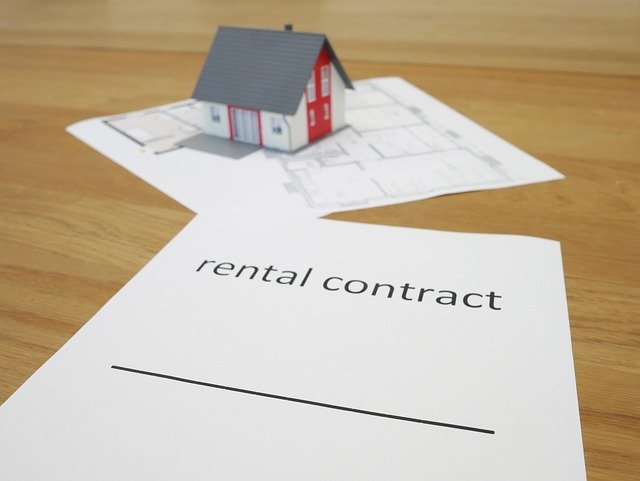How to Find the Ideal Apartment: Complete Rental Guide
Apartment hunting doesn't have to be stressful. This comprehensive guide walks you through how to evaluate apartments, prepare a strong rental application, manage costs like rent and utilities, and read your lease with confidence. Learn practical tips for budgeting, one-bedroom searches, and getting the most from your rental options—perfect for first-time renters and those relocating.

How to Find the Ideal Apartment: Complete Rental Guide
Searching for the right rental is easier when you approach it with a plan. This guide breaks down the key considerations—from expected costs to the application process—so you can pick a safe, comfortable apartment that matches your lifestyle and budget. Read on for practical steps, checklists, and negotiation tips that will help you secure the best possible home.
| Apartment Type | Average Monthly Rent* | Typical Utilities Cost |
|---|---|---|
| Studio | $1,000 - $1,500 | $100 - $150 |
| One-bedroom | $1,200 - $1,800 | $120 - $180 |
| Two-bedroom | $1,500 - $2,200 | $150 - $200 |
*Prices, rates, or cost estimates mentioned in this article are based on the latest available information but may change over time. Independent research is advised before making financial decisions.
What to Prioritize When Viewing Apartments
When touring units, look beyond aesthetics and evaluate functionality and safety. Check for secure entry systems, adequate outdoor and hallway lighting, and visible maintenance practices. Note how quickly managers respond to repair requests—poor responsiveness is often a red flag. Inspect common conveniences such as laundry (in-unit versus on-site), available storage, and parking options including costs or waitlists.
Pay attention to noise levels and soundproofing between units, and ask about insulation and heating/cooling efficiency. If you own a pet or plan to, verify the building’s pet policy, any breed or weight limits, and associated fees. Small details like hallway cleanliness and elevator reliability reveal how a property is run.
Key Documents and Steps for a Smooth Application
Landlords generally expect a complete packet that proves your ability to pay and your rental history. Typical requirements include:
- Proof of income, commonly showing monthly earnings equal to 2–3 times the rent
- Employer verification or recent pay stubs
- A credit check to assess financial reliability
- References from former landlords
- A security deposit and possibly first and last month’s rent
- An application fee to cover screening costs
Prepare digital and physical copies of pay stubs, bank statements, and ID to speed up the process. If your credit history is limited or contains issues, offer a co-signer or provide larger upfront deposits to strengthen your application. Ask in advance about the timeline so you can submit paperwork quickly if approved.
Ways to Stretch Your Rental Budget
There are many strategies to make your budget go further without sacrificing quality. Consider neighborhoods a short commute from high-demand areas; you’ll often find better value. Look for move-in specials, reduced deposits, or utilities included in rent. Signing a longer lease can sometimes lower monthly rent.
Compare utility costs between properties—older buildings may have higher heating or cooling bills. If you can share a unit, finding a roommate dramatically reduces per-person expenses. Also be mindful of seasonal trends: rental prices and availability often fluctuate with the time of year, so timing your search can offer leverage.
Practical Tips for One-Bedroom Searches
One-bedroom apartments can offer a comfortable balance of space and cost. When touring these units, measure room dimensions to ensure your furniture fits and visualize layout efficiency. Look for built-in storage, closet space, or creative shelving opportunities.
Assess natural light and ventilation to reduce reliance on artificial lighting and HVAC. Check kitchen ergonomics—counter space, cabinet storage, and appliance condition matter for daily living. Finally, inspect walls and windows for noise transmission; a unit that looks great visually may still be disruptive if soundproofing is poor.
Reading and Negotiating Your Lease
Before signing, read the lease line by line. Confirm the lease term and renewal options, and know exactly when rent is due and what late fees apply. Clarify responsibilities for maintenance and which repairs are tenant versus landlord obligations.
Pay attention to clauses about pets, guest policies, and subletting. Understand security deposit terms, allowable deductions, and the notice required to move out. Determine who pays utilities and whether parking is included or billed separately. If anything is unclear, ask for written clarification or request that certain verbal promises be added to the lease.
Final Checklist and Closing Advice
Take time to inspect potential homes thoroughly, ask questions up front, and document everything agreed to in writing. Keep copies of your application and lease, and maintain clear communication with property management.
The rental market can feel competitive, but preparation is your advantage. By knowing what features matter most, organizing required documents, and understanding lease commitments, you’ll be positioned to secure a comfortable apartment that aligns with your needs and finances. Take your time, compare options carefully, and don’t hesitate to negotiate terms that make sense for you.





